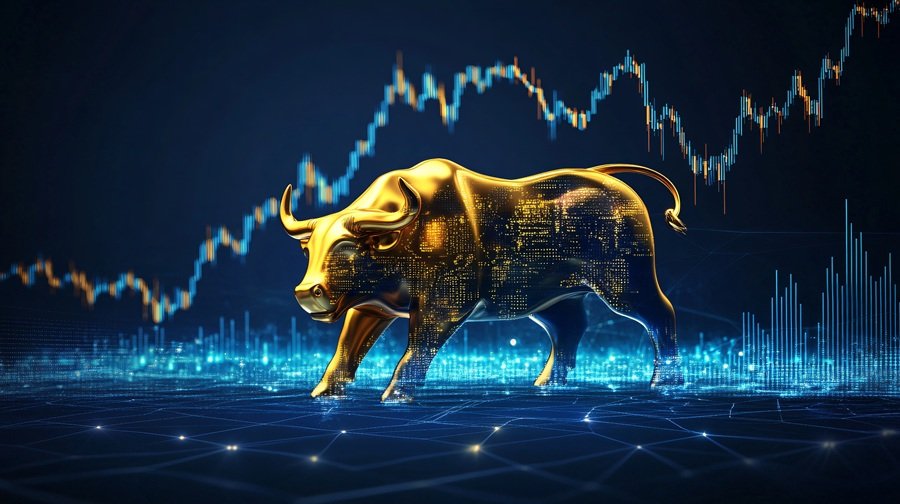
Exchange-Traded Funds (ETFs) have revolutionized the way individuals invest, offering a flexible, low-cost, and diversified means of participating in the financial markets. In this article, we explore what ETFs are, how they work, their benefits, and considerations for investors.
What is an ETF?
An Exchange-Traded Fund (ETF) is a type of investment fund that is traded on stock exchanges, much like individual stocks. ETFs typically track the performance of a specific index, sector, commodity, or other assets. By investing in an ETF, investors gain exposure to the underlying assets without needing to buy each asset individually.
How Do ETFs Work?
ETFs are structured as open-ended funds or unit investment trusts, and they pool money from multiple investors to purchase a diversified portfolio of assets. These assets might include stocks, bonds, commodities, or other securities.
The value of an ETF is determined by the Net Asset Value (NAV) of its underlying holdings, but since ETFs are traded on exchanges, their market price can fluctuate throughout the trading day based on supply and demand.
Key Participants in ETFs:
- Fund Sponsors: Institutions that create and manage ETFs.
- Authorized Participants (APs): Large financial institutions responsible for creating or redeeming ETF shares by trading the underlying assets.
- Investors: Individuals or entities who buy and sell ETF shares on the stock exchange.
Types of ETFs
There are various types of ETFs to suit different investment strategies and objectives:
- Equity ETFs: Track a specific stock index like the S&P 500 or the NASDAQ-100.
- Bond ETFs: Focus on fixed-income securities such as government or corporate bonds.
- Sector and Industry ETFs: Target specific industries, such as technology, healthcare, or energy.
- Commodity ETFs: Provide exposure to physical commodities like gold, silver, or oil.
- International ETFs: Invest in assets outside of the investor’s home country.
- Thematic ETFs: Focus on specific trends or themes, such as renewable energy or artificial intelligence.
- Inverse and Leveraged ETFs: Offer opportunities for higher gains (or losses) by magnifying returns or allowing investors to profit from declining markets.
Benefits of ETFs
1. Diversification:
ETFs provide exposure to a wide range of assets, reducing the risk associated with investing in a single security. For example, a single ETF might hold hundreds of stocks, offering instant diversification.
2. Cost-Effectiveness:
ETFs often have lower expense ratios compared to mutual funds. Since they are passively managed (in many cases), the fees for managing an ETF are generally lower.
3. Liquidity:
Because ETFs are traded on stock exchanges, investors can buy and sell shares throughout the trading day, unlike mutual funds, which are priced only at the end of the trading day.
4. Transparency:
Most ETFs disclose their holdings daily, enabling investors to know exactly what they are investing in.
5. Tax Efficiency:
ETFs are generally more tax-efficient than mutual funds because of their unique creation and redemption mechanism, which minimizes capital gains distributions.
Risks of Investing in ETFs
1. Market Risk:
Since ETFs track the performance of underlying assets, their value can go down if the market declines.
2. Tracking Error:
ETFs may not perfectly track their benchmark index due to fees, liquidity issues, or other factors.
3. Liquidity Risk:
While most ETFs are highly liquid, those focusing on niche markets or low-volume assets may face liquidity issues.
4. Complexity of Specialized ETFs:
Inverse and leveraged ETFs are more complex and may not be suitable for all investors due to their higher risk and short-term focus.
How to Choose the Right ETF
- Define Your Investment Goals:
- Are you looking for long-term growth, income, or hedging against market volatility?
- Understand the Underlying Assets:
- Research the ETF’s holdings and ensure they align with your objectives.
- Evaluate Costs:
- Compare expense ratios, trading fees, and tax implications.
- Check Performance:
- Review the historical performance and tracking accuracy of the ETF.
- Consider Liquidity:
- Choose ETFs with high trading volumes to ensure ease of buying and selling.
ETFs vs. Mutual Funds
While both ETFs and mutual funds offer diversification, they differ in key ways:
| Feature | ETFs | Mutual Funds |
|---|---|---|
| Trading | Intraday on exchanges | End-of-day NAV pricing |
| Expense Ratios | Generally lower | Generally higher |
| Minimum Investment | No minimum (1 share) | Often requires a minimum |
| Tax Efficiency | More tax-efficient | Less tax-efficient |
Conclusion
ETFs have become a cornerstone of modern investing, offering flexibility, diversification, and cost-efficiency. Whether you are a seasoned investor or just starting, ETFs can be a powerful tool to achieve your financial goals. However, like any investment, they come with risks, and it is crucial to research and understand the ETFs you choose to invest in.
By aligning your investment strategy with your goals and risk tolerance, ETFs can help you build a robust and diversified portfolio, paving the way for long-term financial success.




